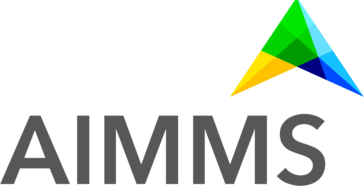Imagine this scenario:
Your organization asks you to develop a large-scale, business-critical application that enables dozens of users to interact with optimization models in real time through a modern web interface.
At first glance, it sounds straightforward. In reality, it requires a complex technology stack and significant engineering effort. Here’s what that entails:
What You’ll Need
- A scalable API layer (e.g., FastAPI; Flask is an option but less suited for large-scale systems)
- A distributed job queue (Celery with Redis or similar)
- A solver cluster (Gurobi, CPLEX, OR-Tools—each with its own integration challenges)
- A Kubernetes deployment for orchestration and scalability
- Event-driven WebSocket architecture for real-time updates
- Authentication, authorization, data versioning, rollback, and multi-user conflict resolution
- A modern UI framework with dashboards, charts, scenario management, and validation
This is far from trivial. Let’s break down the steps.
Step 1: Build the Web Application
Start with the front end:
- React or another modern framework
- TypeScript for maintainability
- WebSocket integration for real-time communication
- Data grids, caching, and input validation
For a robust solution, you’ll likely need a full-stack team—or two.
Step 2: Integrate Optimization
Next, connect your optimization models:
- Handle multi-user concurrency and data isolation
- Implement solver warm-starts and incremental updates
- Maintain version control for every model run with full audit trails (critical for compliance)
Step 3: Enable Real-Time Interaction
Users expect progress updates during solver execution:
- Implement Redis Pub/Sub or similar
- Add WebSocket handlers and asynchronous streaming
- Prepare for debugging complex async workflows
Step 4: Ensure Scalability
Deploy on Kubernetes:
- Configure autoscaling, resource limits, retry logic, and failure recovery
- Monitor performance and prepare for edge cases (e.g., a 5-million-variable MIP crashing a node)
Step 5: Secure the Platform
Security is non-negotiable:
- Authentication and role-based access control
- Audit logging and encryption
- Robust session management
At this point, you’re doing DevSecOps work in addition to application development.
Step 6: Operate and Maintain
Add observability and resilience:
- Prometheus, Grafana, and ELK for monitoring and logging
- Backup strategies and alerting systems
- Incident response for solver failures or queue overloads
The Reality of Python Codebases
One underestimated challenge is maintaining Python optimization code over time.
- Different developers use different abstractions and styles
- Nested list comprehensions, decorators, and global variables make code opaque
- Extending someone else’s model often feels like archaeological excavation
This complexity slows down every iteration and increases risk.
The Reality Check
After months (more likely - years) of development, multiple sprints, and countless infrastructure challenges, you’ll have a functioning cloud-based optimization platform.
But here’s the catch: you’ve essentially rebuilt AIMMS.
Why AIMMS Exists
AIMMS already provides:
- Multi-user support
- Scenario management and versioning
- Data validation, rollback, and UI generation
- Solver orchestration with warm-starts and progress tracking
- Authentication, logging, deployment, and monitoring
All the critical infrastructure is handled for you. You focus on what matters most: your optimization model.
Why AIMMS Syntax Matters
Unlike Python, AIMMS uses a declarative modeling language:
- Clean, structured syntax
- Explicit intent (parameters, variables, constraints)
- Easy for any AIMMS-trained developer to read and extend
This consistency enables powerful tooling:
- Math Model Inspector: Visualizes model structure, highlights bottlenecks, and shows constraint interactions
- Infeasibility Analysis: Pinpoints inconsistent constraints and minimal infeasible subsystems
These tools save hours - or days - of debugging and make model maintenance dramatically faster and safer.
The Bottom Line
If you enjoy building complex infrastructure and troubleshooting distributed systems at 2 AM, developing everything from scratch in Python can be a valuable learning experience.
However, if your goal is to deliver business value quickly and reliably, AIMMS offers a proven platform that eliminates the need to reinvent the wheel.


